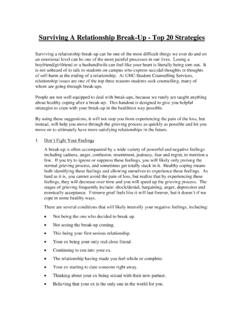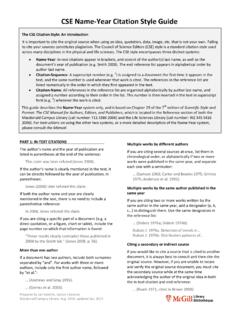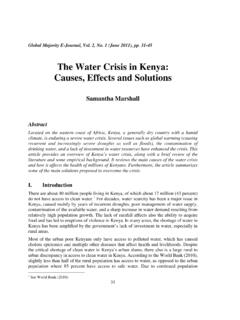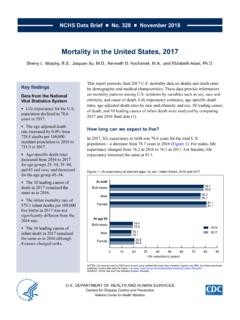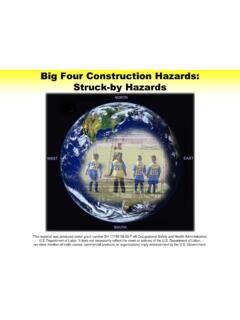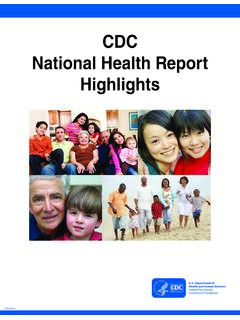Transcription of Global Shortage of Nurses - McGill University
1 1 Global Shortage of Nurses The McGill Nursing Collaborative for Education and Innovation in Patient- and Family-Centered Care Members of the Collaborative Coordination Committee: Ingram School of Nursing McGill University : M lanie Lavoie-Tremblay and Annie Chevrier; CIUSSS du Centre-Ouest-de-l le-de-Montr al : Jessica Emed and Christina Clausen; McGill University Health Centre: Alain Biron and Catherine Oliver Research Assistant: Thalia Aube Funding: The McGill Nursing Collaborative for Education and Innovation in Patient- and Family-Centered Care.
2 November 2019 2 Global Nursing Shortage : Impact & Solutions Global Shortage of Nurses Globally speaking, health challenges are changing and becoming increasingly complex due to an ageing population with a chronic disease burden, such as cardiovascular, hypertension, diabetes and mental health conditions (Douglas, 2011, Both-Nwabuwe, 2019). Alongside these changes which place difficult demands upon healthcare systems around the world, effective workforce strategies that promote recruitment, retention and sustainability of qualified Nurses are urgently needed to properly meet these increasing demands.
3 Universal health coverage, achieving adequate population health standards and promoting equitable access to care depends upon the quality and quantity of a robust healthcare workforce. Regulated Nurses (RNs) work in collaboration with other members of an interprofessional team, providing health services to people of all ages, experiencing various forms of health challenges (CIHI, 2018). A health workforce must be of sufficient capacity to meet the population health needs, with world health leaders such as the World Health Organization (WHO) are predicting an increase in the Global demand for both health and social care (Drennan, 2019).
4 As half of the Global healthcare workforce is compromised of Nurses , Nurses play a critical role in disease prevention and health by providing care in primary, community and hospital settings, including emergency and critical care areas (Drennan, 2019, WHO, 2019). However, in 2014, both the WHO and the World Bank calculated a current Global nursing Shortage of nine million Nurses and midwives (Drennan, 2019, WHO 2019). The definition of a Shortage varies between healthcare system but can be defined as a gap between the number of Nurses required (demand) and the future number who are available to work (supply).
5 The WHO and World Bank in particular, define a Shortage in relation to the Sustainable Development Goals (SDGs), whereby a Shortage means a lower than the required minimum number of doctors or Nurses per head of population required to achieve the population health targets (Drennan, 2019). For example, half of the WHO member states report having less than 3 nursing and midwifery workers per 1000 population, with 25% reporting to have less than 1 personnel per 1000 population (WHO, 2019). The National Syndicate of Nursing Professionals (SNPI) has predicted a Shortage of 18 million healthcare professionals by the year 2030, whereby half of the need are Nurses .
6 Although a largely complex problem with many factors at play, in a nutshell, nursing shortages are primarily caused by the increasing and more complex demands for population health services coupled with a shrinking workforce, with more Nurses retiring from the profession and others leaving the workforce altogether due to unhealthy work environments, characterized as being overly burdensome and stressful (Both-Nwabuwe, 2018). Nursing shortages are experienced worldwide with the situation worsening in the future without policy interventions (Both-Nwabuwe, 2018).
7 Healthcare organizations in the Organisation for Economic Co-operation and Development (OECD) countries, which includes Canada, Australia and the United Kingdom for instance, are all experiencing unstable nursing labour markets, characterized by extreme shortages and high turnover of staff (Currie, 2012). For OECD countries, there is a predicted Shortage of million Nurses by the year 2030 (Scheffler, 2019). 3 The health system size, economy and characteristics of the population impact the entire healthcare system, including the types of healthcare professionals and distribution of the medical workforce to meet the needs of its population (Drennan, 2019).
8 For example, the ratios of Nurses to population based on data from 2017 range considerably from 17, 12 and 11: 1000 persons in countries of Norway, Germany and Australia, to 2 and 1 to 1000 persons in countries like China, India and South Africa (Drennan, 2019). In Belgium, the ratio is Nurses for 1000 population (OECD, 2016). According to the WHO, the largest needs-based shortages of both Nurses and midwives are in South East Asia and Africa (Drennan, 2019). Nursing workforce predictions vary substantially across different countries, even with similar levels of income and development (Buchan, 2015).
9 National governments and their healthcare systems also have established their own minimum targets for workforce planning, such as high-income countries, who are members of the OECD. For OECD countries, only 5 of the 31 member countries have modelled demand and supply needs to the year 2025, Canada included. Of the five countries, four , including Australia, Canada, Ireland and the United Kingdom have all predicted shortages. The USA, being the fifth, have actually predicted a surplus of Nurses by the year 2025 (Drennan, 2019).
10 Other authors challenge the projected surplus of Nurses in the United States, claiming the country will face a Shortage of approximately 200,000 professionals by the year 2020 (Carnevale, 2015). Other francophone countries include Belgium, France and Switzerland for which Belgium is currently not projecting a future Shortage of Nurses (Rafferty, 2019). On the other hand, Switzerland is estimating a need for an additional 60,000 Nurses by the year 2030, with most needs in primary and long-term care (Rafferty, 2019) Understanding Demand Factors The Global nursing Shortage is further challenged due to changing demographics such as the ageing population and a larger burden of chronic diseases, increasing health care needs and thus demands on healthcare services (Sasso, 2019).
